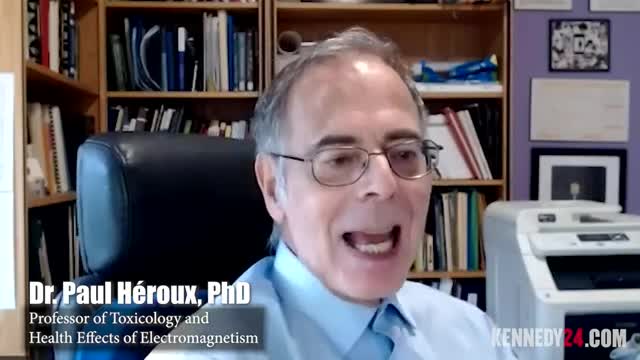Industry's Weak Science on Radiation Faces Growing Scrutiny
July 26, 2024 | Robert F. Kennedy Jr., Presidential Candidates 2024

This article was created by AI summarizing key points discussed. AI makes mistakes, so for full details and context, please refer to the video of the full meeting. Please report any errors so we can fix them. Report an error »

In a recent government meeting, discussions centered around the implications of radiation exposure, particularly from cell phones, and the scientific community's response to industry claims regarding safety. The conversation highlighted the use of the Arrhenius equation, a concept dating back to 1889, which posits that a certain amount of energy must be broken to trigger chemical reactions. This principle was referenced to argue that non-ionizing radiation, such as that emitted by cell phones, is too weak to cause harm.
However, experts challenged this notion, emphasizing that the human body generates reactive oxygen species, which can make it vulnerable to even weak radiation fields. They argued that the industry's claims of safety lack scientific backing and that there are mechanisms by which radiation could potentially increase cancer and diabetes rates.
A significant point of discussion was the role of Dr. George Carlo, a scientist initially hired by the telecommunications industry to conduct research on cell phone radiation. Carlo, who was expected to produce favorable results, instead uncovered alarming evidence about the effects of radiation on health, including studies showing prolonged changes in brain activity in rats exposed to cell phone radiation. His findings led him to return the funding and publicly disclose his concerns, marking a pivotal moment in the ongoing debate over radiation safety.
The meeting underscored a broader issue: the disconnect between engineers and epidemiologists in understanding the health implications of electromagnetic radiation. While engineers, who number around 400,000, often dismiss health concerns as outside their expertise, epidemiologists present compelling evidence of potential risks. This divide has resulted in a reliance on superficial assessments of radiation safety, leaving public health at risk.
As the conversation continues, the need for rigorous scientific inquiry and transparent communication between industries and health experts remains critical to ensure public safety in the face of evolving technology.
However, experts challenged this notion, emphasizing that the human body generates reactive oxygen species, which can make it vulnerable to even weak radiation fields. They argued that the industry's claims of safety lack scientific backing and that there are mechanisms by which radiation could potentially increase cancer and diabetes rates.
A significant point of discussion was the role of Dr. George Carlo, a scientist initially hired by the telecommunications industry to conduct research on cell phone radiation. Carlo, who was expected to produce favorable results, instead uncovered alarming evidence about the effects of radiation on health, including studies showing prolonged changes in brain activity in rats exposed to cell phone radiation. His findings led him to return the funding and publicly disclose his concerns, marking a pivotal moment in the ongoing debate over radiation safety.
The meeting underscored a broader issue: the disconnect between engineers and epidemiologists in understanding the health implications of electromagnetic radiation. While engineers, who number around 400,000, often dismiss health concerns as outside their expertise, epidemiologists present compelling evidence of potential risks. This divide has resulted in a reliance on superficial assessments of radiation safety, leaving public health at risk.
As the conversation continues, the need for rigorous scientific inquiry and transparent communication between industries and health experts remains critical to ensure public safety in the face of evolving technology.
View full meeting
This article is based on a recent meeting—watch the full video and explore the complete transcript for deeper insights into the discussion.
View full meeting